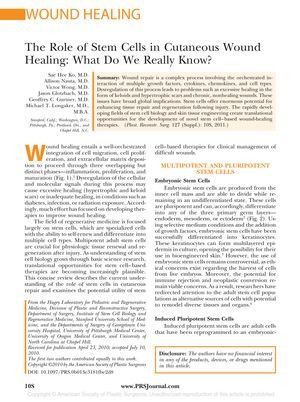The Role of Stem Cells in Cutaneous Wound Healing: What Do We Really Know?
January 2011
in “
Plastic and Reconstructive Surgery
”

TLDR Stem cells have great potential for improving wound healing, but more research is needed to find the best types and ways to use them.
In 2011, a review on the role of stem cells in cutaneous wound healing highlighted the complexity of wound repair and the potential of various stem cell types, including embryonic, induced pluripotent, mesenchymal, and resident epithelial stem cells, to enhance tissue repair and regeneration. The review noted that stem cells respond to the wound microenvironment, with factors like hypoxia influencing their behavior. It was found that epidermal stem cells from the hair follicle bulge contribute to skin repair and increase in number with age, presenting a target for regenerative therapies. Mesenchymal stem cells (MSCs) were shown to aid healing through differentiation and paracrine signaling, with animal studies and human clinical trials demonstrating their therapeutic potential. The document concluded that stem cells hold vast potential for clinical applications in wound healing and tissue engineering, but further research is needed to determine the best stem cell sources and delivery methods.




